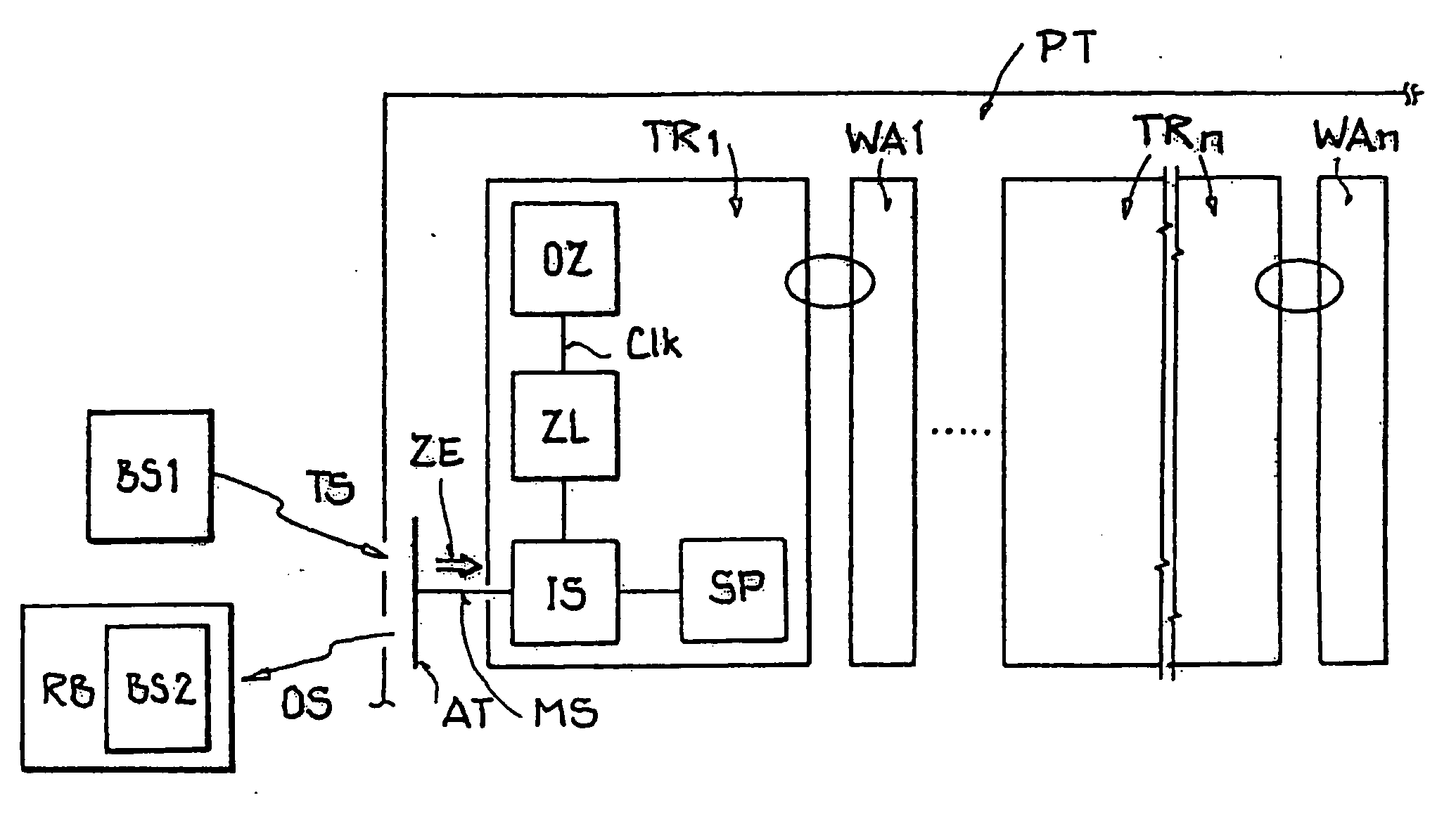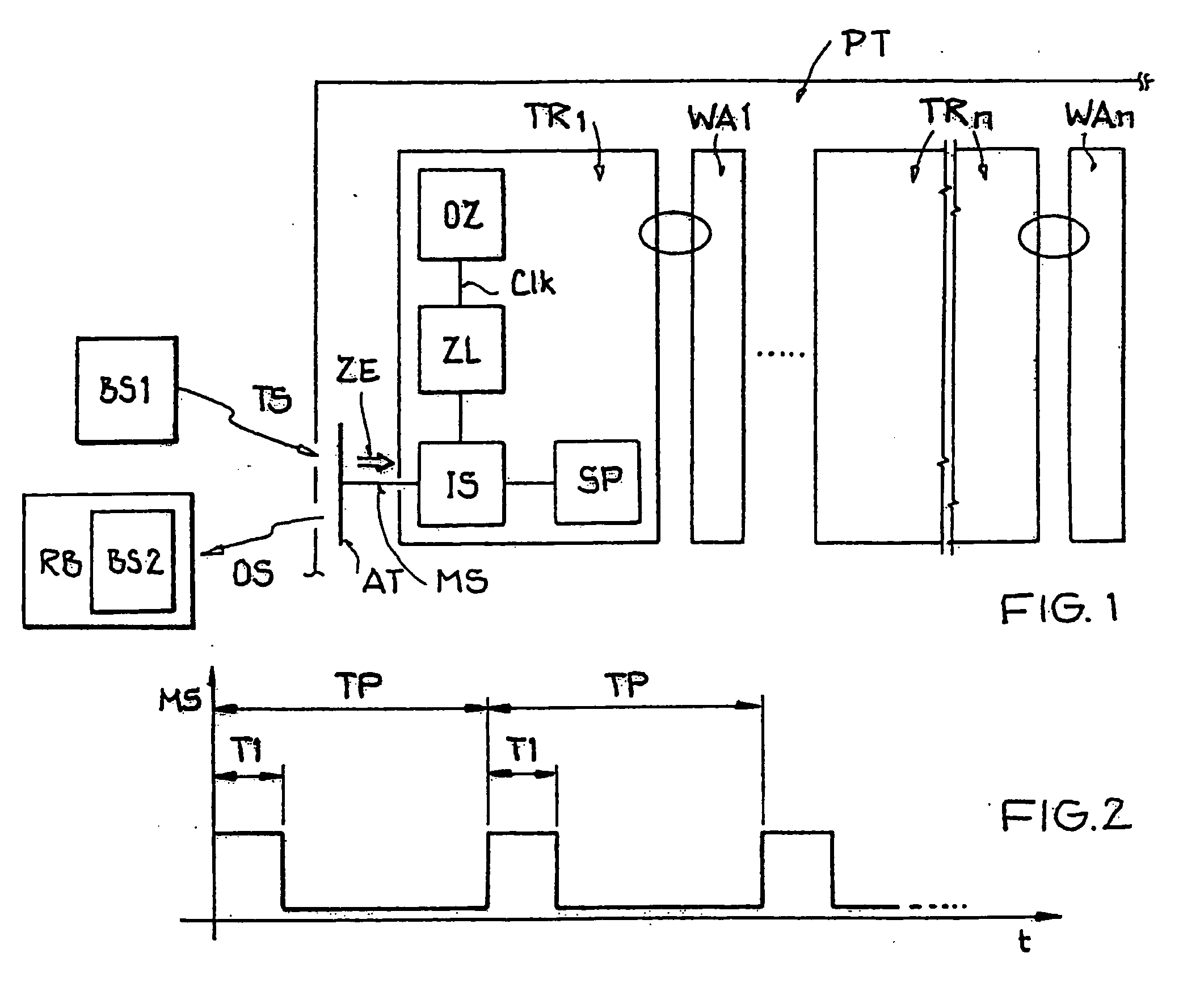Method for locating a backscatter-based transponder
a backscatter-based transponder and transponder technology, applied in the field of backscatter-based transponders, can solve the problems of interference spectrum, change in the amplitude of the received carrier signal, unidirectional or bidirectional wireless transmission of data, etc., and achieve the effect of simplifying evaluation
- Summary
- Abstract
- Description
- Claims
- Application Information
AI Technical Summary
Benefits of technology
Problems solved by technology
Method used
Image
Examples
Embodiment Construction
[0039]FIG. 1 shows a transponder-based pick-and-place application, which may be used in an inventory management system, for example. The application shown includes a first base station BS1, a robot RB that includes a second base station BS2, and a pallet PT upon which are arranged multiple goods WA1 through WAn, each of which is marked with its associated passive backscatter-based transponder TR1 through TRn.
[0040] The transponders TR1 through TRn each include a memory SP, an oscillator OZ, a counter ZL, an impedance control device IS, and an antenna AT.
[0041] The base station BS1 emits a carrier signal TS in the UHF range that serves to supply the transponders TR1 through TRn and is backscattered as a locating signal OS with phase modulation as soon as the transponder is in a transmit / receive range of the base station BS1.
[0042]FIG. 2 shows a diagram of a time behavior of a modulation signal MS generated in the applicable transponder TR1 to TRn for modulating the carrier signal ...
PUM
 Login to View More
Login to View More Abstract
Description
Claims
Application Information
 Login to View More
Login to View More - R&D
- Intellectual Property
- Life Sciences
- Materials
- Tech Scout
- Unparalleled Data Quality
- Higher Quality Content
- 60% Fewer Hallucinations
Browse by: Latest US Patents, China's latest patents, Technical Efficacy Thesaurus, Application Domain, Technology Topic, Popular Technical Reports.
© 2025 PatSnap. All rights reserved.Legal|Privacy policy|Modern Slavery Act Transparency Statement|Sitemap|About US| Contact US: help@patsnap.com



